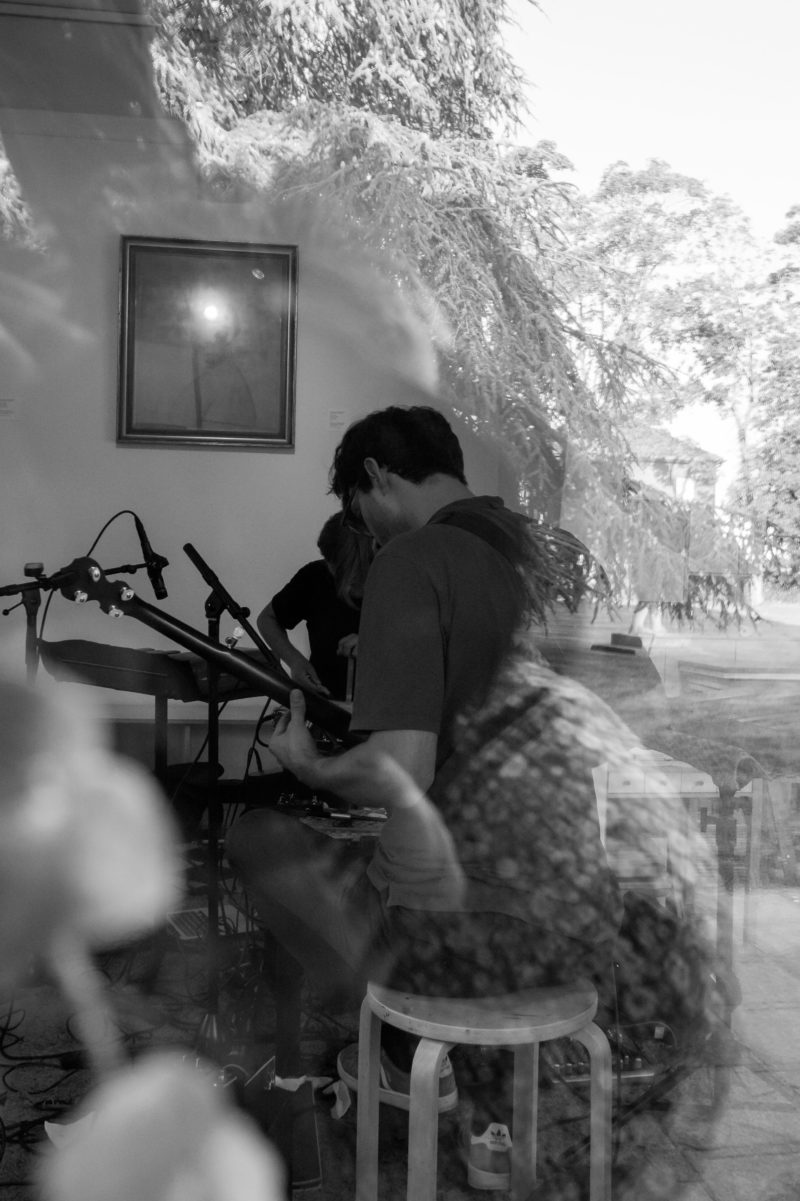Poor Isa

Amber Meulenijzer
You’ve known each other for a long time. How long have you been working together?
Ruben Machtelinckx
The first time we played together was on an album by Linus, another duo of mine. We recorded our second album with Frederik in 2015 and since that moment we’ve been playing and trying things out together. We both experiment a lot with banjo on our own, and we did our first banjo album together some time ago, for which we each recorded one side of the record. That’s where the idea do something together arose.
AM
I think it’s a beautiful evolution. It went from starting off carefully, each taking care of one side of the album, to making something that’s completely blended together like in this latest release. How does that work between you guys? Do you write and create together?
RM
This was one of the first projects where everything originated from rehearsals and experimentations. Nothing had been thought of or was fixed in advance. There was no prior ideas or compositions, except that we wanted to keep it acoustic and focused on the banjo. I'd never really done that in such an extreme way before.
Frederik Leroux
The previous album contained a lot of processing. We’ve done a lot of sessions, mostly here at my house. After seeing each other a lot and creating in a very free way, at a certain point the sound started to crystallize. It was really an exploration on the banjo, a search for unconventional sounds and then expanding further from there.
AM
How important is chaos in that process?
RM
I think silence was a rather important factor. Because the space where we rehearse here is very sensitive to sound - there is a lot of reverb, you can also hear it as we talk now - silence quickly became a large part of the music. So rather than a feeling of chaos, we experienced a certain calmness or tranquillity.
FL
It’s the kind of state in which you let yourself wander around a bit without the direction or the track immediately becoming clear. It’s more about looking around, taking in your surroundings and wandering further from there. And yes, the sound of this space really played a huge role in the creation process, and the reverberation of this room also influenced the way we played.
AM
While listening to the record, I had a feeling of weightlessness, but at the same time I feel there’s something twisting and almost colliding in the sound. Does that correspond with your feeling of the music?
RM
There are a couple of pieces on the record where we used a kind of ebow technique that quickly results in a drone kind of sound. We wanted to be rather careful with that in order to avoid a kind of minimalistic repetitive vibe. When we noticed we were getting into those kind of sound zones we started looking for some kind of tension, exploring more alienated sounds.
FL
By looking into this alienated soundworld, we tried to stay away from genre connotations as much as possible. We were looking for something more unstable.
AM
Are there any associations with images or feelings for you during the creation process? Is there a lot of perception involved?
RM
Of course there are images involved, but I think we certainly didn’t consciously consider them as a starting point. It was really an investigation in which things reinforce each other in sound rather than something that emerges from images.
FL
It's about the search for directionlessness, which for me has been a starting point for many of the projects I've been working on for some time now. The feeling you are in a kind of rippling state instead of in a trajectory. There are elements that come back in different variations; you can wander around and choose which ones you want to follow or focus on.
RM
While listening, you also often have the feeling that a lot of things are coincidences, and that's indeed how a lot of things came about. I like that. It’s almost like a field recording, where things just happen to come together which then form a new whole and suddenly go together in a musical way.
FL
It's very distilled, too. To come back to the chaos we were talking about, there is not really much of a chaotic part. Except perhaps during the work process, when we let a lot come in and experiment with a lot of possibilities, and suddenly we come to coincidental combinations which become completely purified. It is improvisation, but within a very well defined, precise sound image.
AM
The notion of silence is a beautiful given. A sound that appears suddenly takes on a different meaning, which then shifts to something musical.
RM
Yes, a large part of the tension in the music is actually determined by what is not played rather than by what is played. It's also nice to be able to have a very detailed look at what sounds blend together in this way. For example, Frederik uses many different types of brushes on drums, each of them has a different timbre. We've been able to experiment a lot with that.
FL
Definitely worth a few visits to the Brico.
After further discussing quality time at Brico, the length of the Chaussée de Mons and the biotope of secondary roads and front yards in general, we finish our mossy green tea and I leave Ruben and Frederik. They play in Eindhoven that night and still have a long way to drive.
Poor Isa play Eastern Daze VI Thursday November 24 at Miry Concertzaal in Ghent. Tickets for sale here!